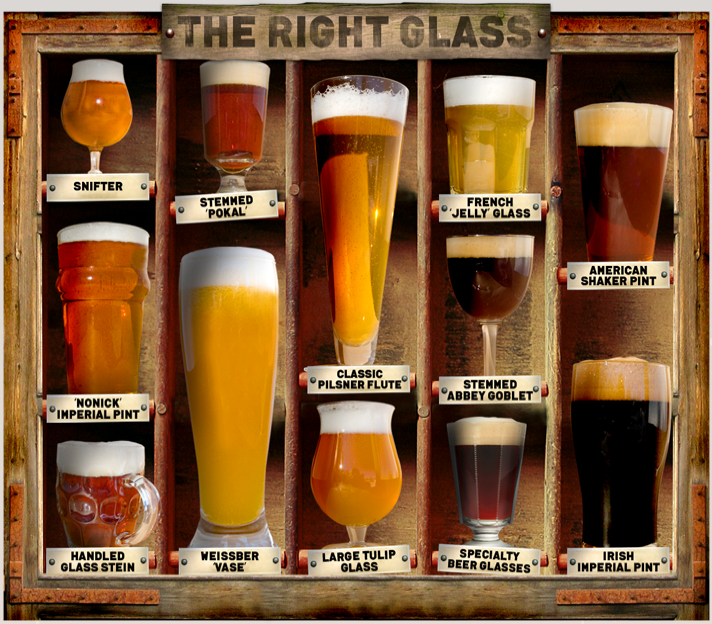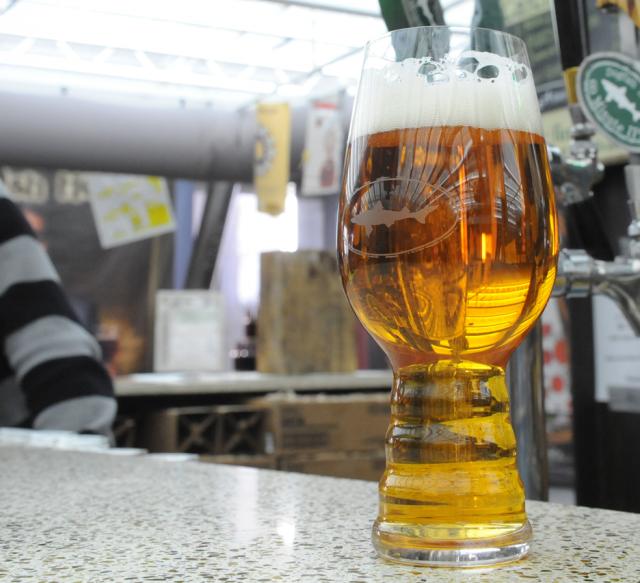If you read my post on glassware, then you should be aware of how important your sense of smell is in affecting your flavor perception. Going along the same lines of of proper tasting techniques, I thought I’d expand a bit further and talk about the flavors that you don’t want to taste.
Simply put, off flavors are the wrong flavors, the bad flavors, the flavors that aren’t supposed to be there. Why would anyone want to be able to recognize these flavors? If you are a brewer, it is important to know when something is negatively impacting the flavor of your beer. If you serve beer, it is important to know that you are serving your patrons the best quality beer, free from imperfections, to give them the best possible experience. What about all the other craft beer drinkers? Should they go through some sort of off flavor training? On the one hand, it is highly beneficial to be able to tell when the your beer in your fridge isn’t fresh anymore and should be tossed, or whether something is wrong with your beer when you go out to bars. On the other hand, once you learn to recognize off flavors, there’s no unlearning what you know. You’ll see (taste?) everything in a whole new light. Certain flavors will just stick out to you, but stay hidden to anyone who hasn’t gone through off flavor training.
I won’t go into too much detail about specific off flavors. Instead I want to focus on some guidelines of the two common places that off flavors become produced: During fermentation, and storage/serving.
During fermentation:
Most off flavors are actually normal byproducts of fermentation. If you go to White Labs’ website for example, they will give you the specific amounts of different off flavors that their yeast produce. Depending on the style, some of these off flavors are expected, and even desired. British yeasts will typically have more diacetyl than other yeast strains, and lager yeasts usually produces more acetaldehyde than other yeast strains. Improper techniques can exasperate these flavors far more than they should be, and they will then become detrimental to the beer.
There are other off flavors that can be produced durning production by other sources besides just the yeast. Again, these can be controlled by proper brewing techniques. These are out of a customer’s control, and thankfully, usually not noticed in commercial level brewing, so I won’t detail any of these specific flavors. Homebrewers however, would greatly benefit from studying these further. There are links at the end for further study.
Improper Storage/Serving:
All of the off flavors that can be produced during this stage can be prevented. Anyone who serves beer should be well aware of how to prevent these, as well as anyone who cares about drinking beer the way it’s supposed to be enjoyed.
The most common off flavor in this regard would be oxidation. Oxidation occurs when beer gets in contact with oxygen. Despite being sealed, beer bottles are not air tight and over time, will slowly get more and more oxidized. This is why it’s best to always drink beer fresh. Heat will increase the speed at which oxidation occurs, which is why it is best that beer stays refrigerated as much as possible.
Oxidized beers will develop a variety of different flavors, with papery/cardboard like being the most common. If you don’t understand what I’m talking about, suck on a wet piece of a cardboard box and you’ll get the idea. A little vinous or sherry like flavors can also develop. While these flavors are ideal in a barley wine (explained further here), in average alcohol strength beers, these flavors make the beer a bit unpleasant.
Keep beer out of sunlight, especially if it is a hoppy beer. Fun game: pour an IPA into a clear glass and leave it out in the sun for twenty minutes then drink it. Yeah, that’s what a skunked beer tastes like. The sunlight will literally take elements of the hop compounds in a beer, and convert them into essentially the same compound that gives skunk spray it’s wonderful aroma.
Lastly, if you serve beer from a tap, CLEAN YOUR TAP LINES! Beer has residual sugars and various trace minerals. Failure to clean tap lines means these sugars and minerals begin to coat the interior of the beer line. Once it starts to build up, it begins to harvest bacterias that alter the flavor of the beer. Typically, the flavor will start to become slightly acidic, or sour, and simultaneously becomes a bit buttery. The buttery flavor is from a compound called diacetyl, the souring is from a bacteria known as Pediococcus. To prevent these types of off flavors, it is important to clean your tap lines at least every two weeks! Only flushing your lines with water does not count as cleaning them. Sadly, to many bars around town, this standard sounds over dramatic. Trust me, there is a difference in flavor and aroma when you have a beer from a bar that cleans their tap lines regularly, and one that doesn’t.
For more information on off flavors, this guide from MoreBeer! is very helpful. Otherwise, feel free to ask!

Glassware is one of the most under appreciated aspects of enjoying craft beer. That truth is however, that glassware is probably one of the most important factors in whether a beer can be found enjoyable or not.
First, it is important to understand how vital aroma is to contributing to flavor perception. The human tongue is only capable of discerning five different tastes (sweet, salty, sour, bitter, and umami). But if these are the only tastes that we can detect, how is it that we can perceive the difference between one beer to the next? Our sense of smell, on the other hand, can detect between 4,000 and 10,000 different odor molecules! Our perception of flavor is in part determined by what our tongue tastes, but also the smells that our nasal passage detects.
If you want to truly taste a beer to the fullest, inhale through your nose as you are drinking, hold your breath as you taste it in your mouth, and breath out your nose after you swallow. By drinking beer this way, you are taking in the aroma and smell of the beer as you are drinking and after you swallow, you are allowing the aroma to travel back though your nasal passage so you can get a good sense of it’s aftertaste.
So, now that you know how important your sense of smell is, why does glassware matter? You want something that is going to allow you the best possible experience of being able to smell and take in the aroma of you beer. How well do you think you can smell your beer by drinking out of the bottle?
Aside from contributing to aroma perception, proper glassware also depends on the style of beer you are drinking. The above image is taken from craftbeer.com This link is a great resource for learning and understanding what glassware best compliments which style of beer. I highly recommend checking it out.

